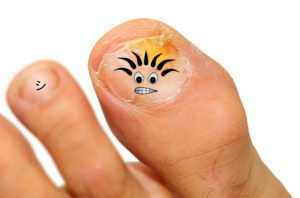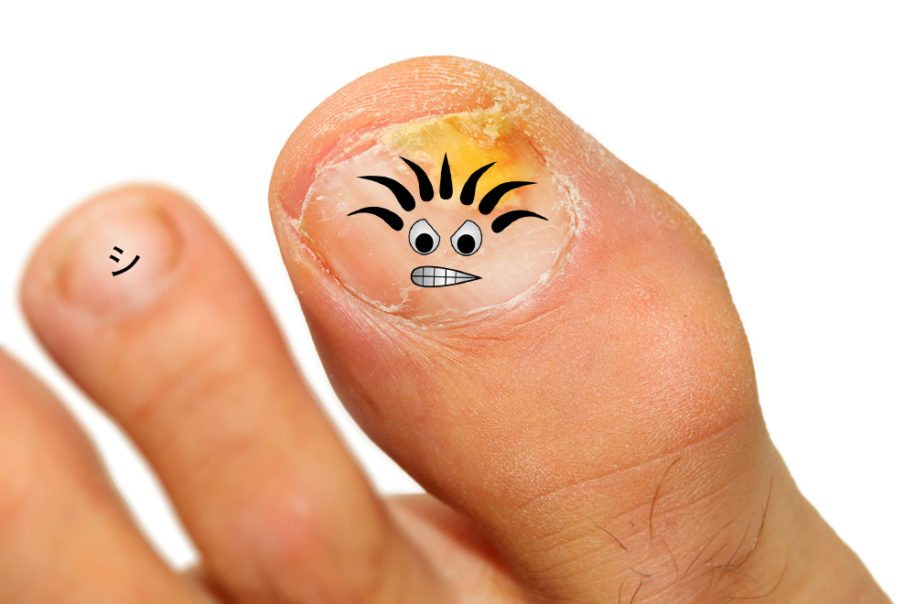Do you get intense sugar cravings, digestive problems (gas or bloating, or both), brain fog, exhaustion, and anxiety or depression? Perhaps you have bad breath, maybe a white coating on your tongue (oral thrush), you’ve lost your sex drive, your sinuses drip a lot, get clogged, you experience allergies, mysterious skin rashes… Or… you have joint pains or hormone imbalances.
Urinary tract infections (UTIs) or ugly nails are not the only signs of candida overgrowth.
Cell Damage
I have learned about the cyclical pattern of nutrition and how some of it can cause cell damage. Improved nutrition is the answer for improved wellness.
What is Candida and how does one get it?
Candida albicans is a specific strain of yeast that lives in our intestinal tract; all of us. We need Candida because it is one of many fungi that aid us with nutrient absorption and digestion.
The problem is that Candida is opportunistic, that means it takes advantage of opportunities and will grow out of balance. When this happens, you get the “UTI”, mysterious rashes, or other symptoms. AND if your immune system can’t keep this yeast infection in check, the Candida infection can migrate to other areas of the body, including the blood and membranes around the heart or brain.
Candida Overgrowth Syndrome (COS), is the medical term used when Candida has grown out of control in your body. Make no mistake: This is a chronic health condition. And you’d be surprised at how many people don’t realize they have a serious yeast infection because the symptoms are so diverse and we tend to always blame bacteria for everything.
Things we do, every day, to give ourselves yeast overgrowth:
-
 Sugar and foods that convert to sugar: Just try to find a packaged food that doesn’t have added sugars! (and if you do, use that brand) Sugars, refined carbohydrates and alcohol help yeast grow. So do some whole grains if they irritate your gut lining.
Sugar and foods that convert to sugar: Just try to find a packaged food that doesn’t have added sugars! (and if you do, use that brand) Sugars, refined carbohydrates and alcohol help yeast grow. So do some whole grains if they irritate your gut lining. - Overusing antibiotics: There is no doubt that antibiotics have saved lives. But resistant bacteria and other “superbugs” are again a threat. Antibiotics work only on bacteria. Today, we run to an antibiotic prescription for everything that might be any infection: yeast, virus, parasite… we start our course of bacterial antibiotics without knowing what we have. These antibiotics kill ALL the bacteria in us—including the probiotics we want and that also help digest food, absorb nutrients, and for this discussion: Probiotic bacteria keep yeast, like Candida, from taking over.
- Eat grain-fed, organic meat: Non-organic meat—or even grain-fed organic meat—comes from animals that are not being fed a proper diet. Infectious microbes are much higher in grain-fed animals. Non-organic animals are given feed that contains antibiotics; nearly 80% of antibiotics sold in the U.S. are used in animals, primarily to promote growth and to prevent infection caused by cheap feed and other inhumane commercial practices. This meat costs less in the store, which means many of us are consuming them, unwittingly, day in and day out.
Raise the alarm!
The public will demand [the antibiotic and] … then will begin an era … of abuses and the evolution of resistance.
- Birth control pills: In and of themselves, these do not directly cause a yeast infection. BUT they can predispose us for one when we also eat a sugary, starchy diet or receive a course of antibiotics. The hormone changes created by birth control pills seem to encourage Candida to overgrow when the other pieces are in place.
- Oral Corticosteroids: Used for asthma, steroidal inhalers imbalance the natural microbial balance in the lung and airways. By killing the healthy bacteria, unaffected Candida and other microbes or parasites can take over. Quick tip: Swish a tablespoon of antimicrobial coconut oil plus 1-2 drops essential clove oil in your mouth. Coconut oil becomes liquid at room temperature; swish it between your teeth, around your tongue, etc. Spit it out into the trash—it can re-harden and clog your drains.
- Diabetes: Because your blood sugar and sugar levels in your mouth and on other mucous membranes are higher, your inner ecosystem fosters yeast and other unwanted bugs like parasites. These bugs feed on sugar.
- Toxic chemical or metal accumulation: Oddly, Candida and other yeast contribute to our detoxification systems. They need metals to survive and some can convert chemicals to energy. Although very high levels of either inhibit growth, lower levels may encourage it.
How do I know if I have a yeast infection?
Blood, stool, or saliva lab tests can tell if you have Candida in the location tested. And there’s another way if you are suspicious: The spit test.
Free and easy, do the spit test like this: For six days in a row, when you wake up in the morning, fill a glass halfway with room-temperature water (before you brush your teeth or eat or drink anything). Next, work up a dime-sized amount of saliva and spit it into the glass. Check it three times over the course of forty-five minutes to see if your saliva sinks to the bottom, stays floating on top, or if it grows legs, little spindly tails that reach down the glass. If it sinks or grows legs, suspect that yeast is overgrowing in your system.
Nutrition Response Testing®: My non-invasive tool tells me the current health of all your organs and systems and what is causing them to be unhealthy. If it’s yeast, we’ll find it. Something else? We’ll find and fix what’s really wrong.
How to control Candida?
Antibiotics, many medications, toxic chemicals, and food sensitivities imbalance and thin our digestive lining. We lose our ability to protect ourselves from yeast overgrowth as well as pathogens like parasites. We become more vulnerable to all kinds of foreign invaders including yeast overgrowth.
When yeast and other pathogens begin to overgrow our gut, having a thinned gut lining makes it more likely that they will “leak” out and spread to other areas of the body.
 Step One (start immediately) of any Candida program is to remove ALL foods that create digestive imbalance and foster yeast overgrowth. Create an account, and get your CANDIDA FOODS & ALL my DOWNLOADS FREE.
Step One (start immediately) of any Candida program is to remove ALL foods that create digestive imbalance and foster yeast overgrowth. Create an account, and get your CANDIDA FOODS & ALL my DOWNLOADS FREE.
An Ounce of Prevention Is Worth a Pound of Cure! Keep Candida at bay: Completely eliminate grains, sugars, fruits, starches and alcohol from your diet for three to five days. You will not make headway against candida overgrowth unless you remove their favorite foods.
Step Two (5 days): Build the lining of the intestinal tract. Clean foods that specifically help include Mom’s Healing Bone Broth or vegetable broth from organic onions, garlic, celery, kale, sea salt and pure water (the best is clean spring water). Let bones or veggies simmer and strain. Discard the vegetables and refrigerate the broth.
Throughout the day, sip on warm broth; make sure you are getting plenty of fluids to help your body flush out all the toxic waste from the yeast and, perhaps, from your environment; a minimum of 72 ounces per day.
Focus on mineral and nutrient-rich, detoxifying foods. Eat plenty of steamed, fresh, organic veggies; or add vegetables to soup stock. For now, stay away from starchy vegetables like carrots, radishes, beets, sweet potatoes and white potatoes, as these contribute to blood sugar levels. Once a day, but no more, eat salads made from leafy greens (like romaine) or bitter greens (like chard). Skip the bottled, sugar-and-inflammatory-oil-containing dressings. Use olive oil and raw apple cider vinegar or lemon juice.
 Step Three: Selective remedies, essential oils, coconut oil and supplements. More is not always better! Guessing is never wise. All of the following are useful.
Step Three: Selective remedies, essential oils, coconut oil and supplements. More is not always better! Guessing is never wise. All of the following are useful.
Research shows that candida albicans, the strain of candida that leads to systemic candida overgrowth is often resistant to both fluconazole and itraconazole, the drugs most often prescribed for candida.
Multistrain probiotic—the best comes from cultured foods and not in a capsule. Mix it up! There are many recipes here. Choosing a quality probiotic supplement can be a challenge. Different probiotic strains do different things. There are certainly a lot on the market, but I honestly can’t recommend you take any of them unless they are proven to address Candida AND if Nutrition Response Testing shows they are right for your body and situation.
Coconut oil is naturally antimicrobial. Especially soothing for skin rashes, use coconut oil instead of toxic lotions.
Add a drop of clove, oregano, myrrh, or lavender oil to a tablespoon of coconut oil and swish the mixture around in your mouth. Draw it between your teeth, swish around your tongue, repeat ideally 20 minutes and then spit it out. Not only will you have nice breath, but you will have removed much of the oral yeast.
Milk thistle and/or ginger tea can help cleanse your liver so it more effectively can remove yeast toxicity, environmental pollution, and prescription medication residues.
Food-grade diatomaceous earth or high quality bentonite clay (note: most commercial brands are lead contaminated) soak up the yeast toxicity as well as any cell components and flush them from the body.
Step Four (after the first 5 days): According to ancient Chinese medicine, warm starchy vegetables support the spleen in clearing Candida and other pathogens from the body.
According to Ayurveda, warming fall vegetables that nourish the spleen include sweet potatoes, yams, peas, mung beans, lentils, kidney beans, adzuki beans, carrots, beets, butternut squash, spaghetti squash, acorn squash, zucchini, yellow squash, rutabaga and pumpkin. Start adding these slowly—they do contribute to blood sugar.
Grains, even the so-called “pseudograins” or non-grass family grains, are very cooling. Some are also drying, so they may help certain people. Always monitor how you feel when adding any new food.
There’s more to the story
Something you did, at somewhere along your life, allowed the yeast to grow out of control. Two things have happened:
- Your “normal” habits fostered candida overgrowth; and
- other systems in your body are now compromised (with yeast toxicity, other infections, toxic chemicals or heavy metals).
Usually I see imbalances in the liver, adrenals, or thyroid, or a combination thereof. These need to be supported and strengthened for the candidiasis to be completely brought back under control.
And very importantly, you need to view the steps you are taking as a permanent shift: One that will gain you the quality of health you want for the rest of your life.
If I can help you in any way, please contact me: marie@synergynutrition.info
Ding, C., Festa, R.A., Sun, T.S., Wang, Z.Y. (2014) Iron and copper as virulence modulators in human fungal pathogens. Molecular Microbiology. Jul;93(1):10-23. doi: 10.1111/mmi.12653. Epub 2014 Jun 9.
Fukushima, C., Matsuse, H., Tomari, S., Obase, Y., Miyazaki, Y., Shimoda, T., Kohno, S. (2003) Oral candidiasis associated with inhaled corticosteroid use: comparison of fluticasone and beclomethasone. Annals of Allergy, Asthma & Immunology. Jun;90(6):646-51.
Ventola, C. L. (2015). The Antibiotic Resistance Crisis: Part 1: Causes and Threats. Pharmacy and Therapeutics, 40(4), 277–283.


Leave a Reply
You must be logged in to post a comment.